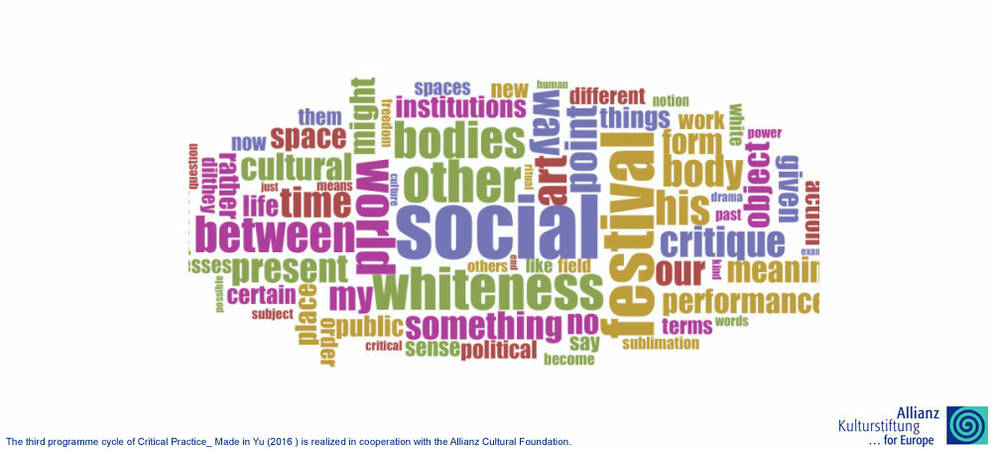
CRITICAL PRACTICE - MADE IN YU - THIRD CYCLE - COMPENDIUM
“Always contextualize”
volume on the Critical Practice_Made in Yu Edition Third Circle
The main theme of this volume is the importance of the socio-political and cultural context to the artistic and curatorial practice. Responding to that theme, we plan to examine whether and to what extent there is homogeneity in the contemporary international performing arts scene and what it means to act internationally and locally in the given circumstances. Two questions lie behind that examination: How much is the global international? and How much is the local authentic?
The volume was created through a specific work process.
The editors invited 10-15 active cultural workers, curators or programmers in the field of performing arts who would write studies of their hypothetical curating of the same contemporary artworks / performances in their local contexts. The set of the artworks will be generated by the proposals coming from the curators themselves, on the basis of their preferences (works they like, find interesting, intriguing, etc.). The hypothetical curating is to take place in the real-existing circumstances in which the invited curators work. Predicated on these premises, the curatorial studies would include a display and elaboration of curatorial practices relating to the ‘adaption’ and ‘translation’ of the selected works in the local context, making visible the different activities, mechanisms and skills needed for the realisation of a curated event in different contexts.
Through the above-explained process we aim to rethink the autonomy of the art and its social determination. In addition, we want to re-examine the prematurely ossified term “curating and sharpen the discussion about the position of the curator in performing arts, which is usually associated to the institutional framework.
In a broader sense, the project challenges the thesis: Go international or else – stay local. We cannot know in advance what will be the results of that challenge, but we do know that there is a dialectic tension in how the international artistic scene is formed. On the one hand, that scene is never a collection of local scenes and their specificities, rather it relies upon the processes of selection, translation, recontextualization and inclusion or exclusion of certain representatives of those scenes in the international context. At the same time, however, in the global society in which we live today we must ask how much is the local actually authentic and acknowledge that Herder’s concept of “culture as an island” has to be abandoned as it is completely contradictory with the continuous influences and interactions that are happening on the global scale.
Credit:
Editor in chief: Ana Vujanović
in collaboration with Biljana Tanurovska Kjulavkovski, Marijana Cvetković & Jelena Knežević
30.04.17 - 30.06.18
Skopje, Macedonia
